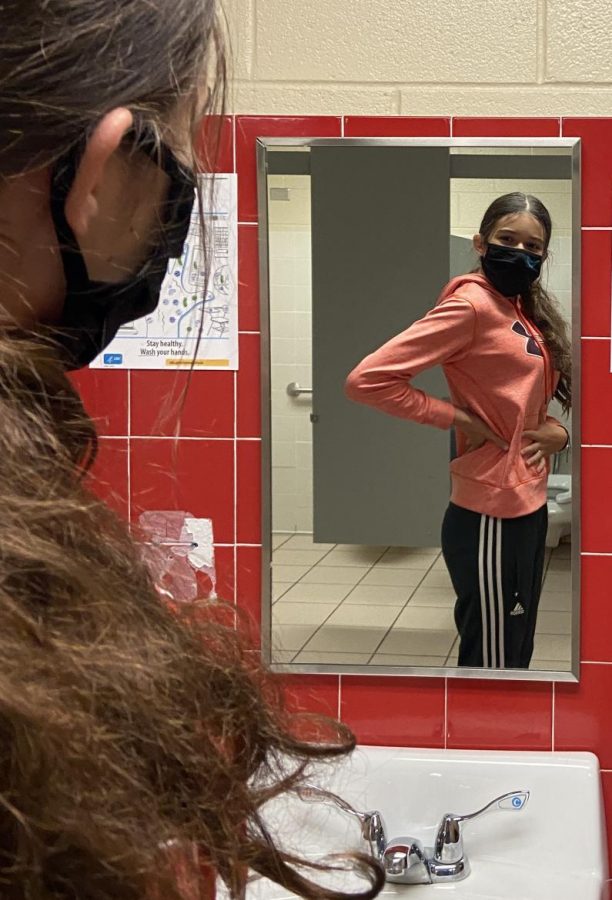Eating disorders and how they affect people
October 29, 2020
What if there are people in our school who are victims of an eating disorder and we are not noticing it? Around 10%-15% of the U.S. population – around 30 million Americans – will have an eating disorder in their lifetime, according to Mirasol Recovery Programs. Eating disorders are actually the second deadliest mental illnesses, second to opioid overdose.
Eating disorders may seem harmless, but they are very deadly. Even if you get treatment for an eating disorder or stop, the consequences from the eating disorder will haunt you forever. It can cause tears in the stomach, and can actually make it harder for women to eventually have children.
There are six main eating disorders: Anorexia Nervosa, Bulimia Nervosa, Binge Eating Disorder, Other Specified Feeding and Eating Disorders (OSFED), Avoidant Restrictive Food Intake Disorder (ARFID), and Unspecified Feeding or Eating Disorder (UFED), according to the Anxiety and Depression Association of America.
Anorexia Nervosa is an eating disorder characterized by extreme weight loss. People with Anorexia tend to restrict the amount of calories they consume, exercise compulsively, and/or binge eat. About 20% of the people who suffer from anorexia will die from the consequences of this disorder, and one out of five people will attempt suicide, according to the Garvan Instiute of Medical Research. Ways to tell if someone has Anorexia is if the person has dramatic weight loss, dresses in layers to hide weight loss or to stay warm, makes lots of comments about feeling “fat,” and excessively exercises regardless of how ill they are feeling.
Bulimia Nervosa is a serious, potentially life-threatening eating disorder where people binge food and then self induce vomiting, so that the food they consume is out of their body. The death rate for people with Bulimia is 3% – 10% of people, according to the Gurze Salucore Resource Guidet on eating disorders. It may seem like an insignificant number, but that is thousands of people. Ways to tell if someone has Bulimia Nervosa is if there is evidence of binge eating, frequent trips to the bathroom after meals, the smell of vomit, calluses on the back of hands and knuckles from self-induced vomiting, drinking lots of water, and/or using excessive amounts of mouthwash, mints, or gum.
Binge Eating Disorder (BED) is a severe and life-threatening eating disorder. BED is like Bulimia Nervosa because they both use binging. Binge eating is when someone consumes large amounts of food quickly, causing them to feel uncomfortable. They often feel a loss of control during the binge. They also feel shame, guilt, or distress afterwards. Common signs of binge eating include secret episodes of binge eating that recur, having low self esteem, hoards food in strange places, evidence of large amounts of food disappearing, and/or creating scheduled times for binge eating.
Other Specified Feeding and Eating Disorders (OSFED) may not seem like it is a serious eating disorder, but it is just as life threatening as any other. This disorder was made for people who do not meet the criteria for Anorexia or Bulimia, but still have a severe eating disorder. OSFED’s symptoms are like other eating disorder symptoms. Binge eating, low self-esteem, the need to burn off weight gained, and purging behaviors, are all symptoms of OSFED.
Avoidant Restrictive Food Intake Disorder (ARFID) is an eating disorder where people cannot get enough nutrition in their body. It is also known as “Selective Eating Disorder.” Unlike the other disorders discussed so far, ARFID is not based on body image. ARFID can cause many problems. For children, they can have stalled weight gain and vertical growth. Adults may not be able to maintain basic body functions. People with ARFID tend to eat things that do not contain nutritional value such as paper, soap, cloth, hair, string, wool, soil, chalk, talcum powder, paint, gum, metal, pebbles, charcoal, ash, clay, starch, or ice. The items vary with age.
Unspecified feeding or eating disorder (UFED) is an eating disorder where a person has an eating disorder, but does not give enough information to doctors to have a classified disorder. These eating disorders tend to make a person feel very uncomfortable in social settings.
If you know that someone around you has an eating disorder, try to talk to them about what is going on. Tell them that they are beautiful and that they don’t need to live up to society’s standards. Sometimes all a person needs is a friend. You can also always talk to an adult or teacher. Who knows…you may just save someone’s life.



